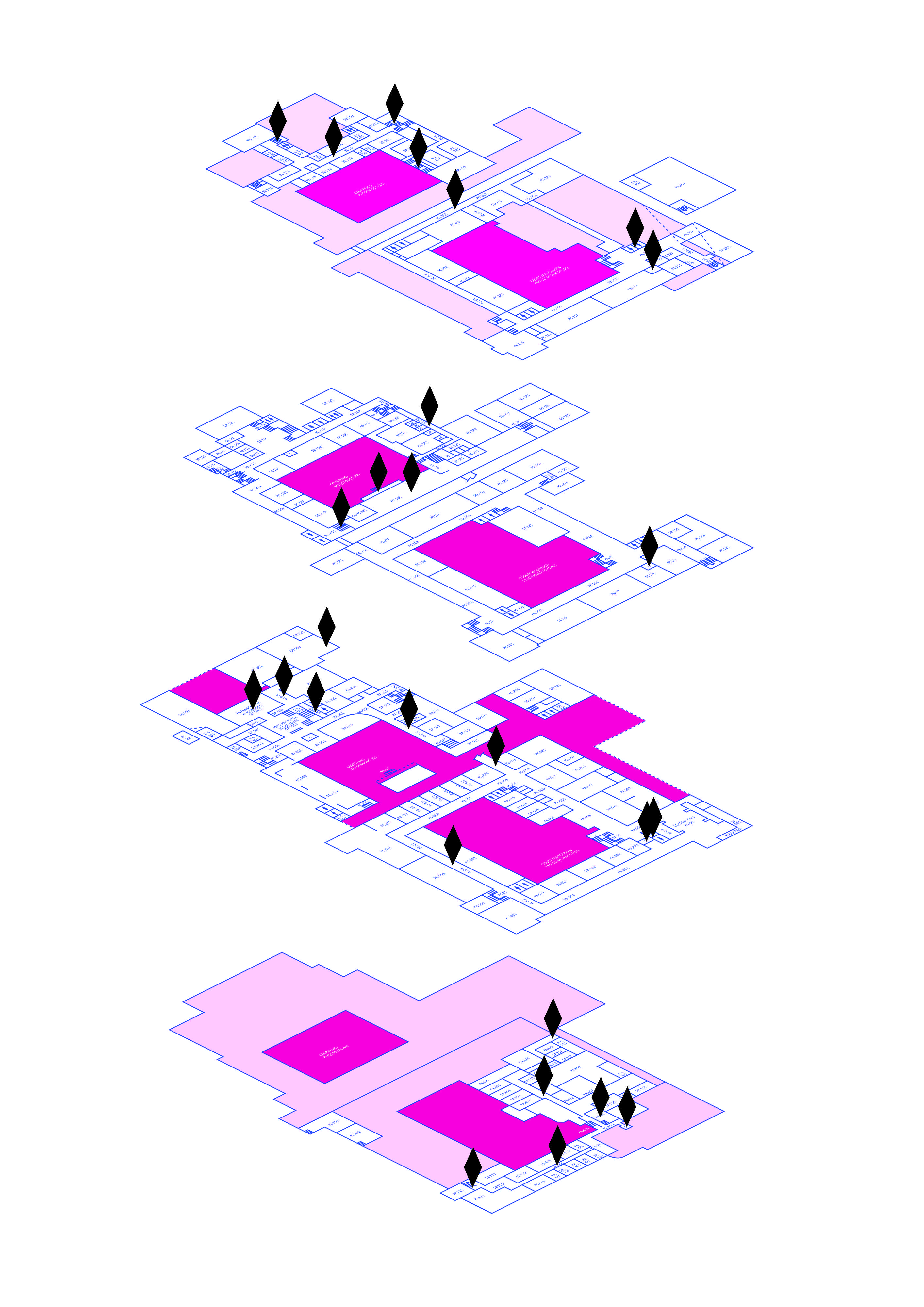Becoming nomad
Lyotard’s differend in a spatio-temporal environment.
Observer can be a sound designer and a nomadic explorer of
an emergent counterpoint of present habitat.
Work consist of:
1. Audio files for audience, spectators, sound designers -
as tools of revealing the existing space.
2. Map of desired space
3. Instruction of a walk
4. Starting/Finishing point
Add-ons:
1. Smartphone
2. QR-codes
_______________
Instruction
1. Download desired audio file.
2. Look at the map.
3. Try to remember as many spatial audio-observations as you want to.
4. Play the audio file in starting/finishing point.
5. Walk towards places in any order you want.
6. Try to observe audio in changing environment.
7. Reach the finishing point at the end of the audio file.

Note:
Portrayal of sonic events in existing habitat.
This work is an attempt to answer a challenging question: how to re-create Lyotard’s differend with an active participation of spectators. A spectator is defined as anyone who become an active investigator-performer of the existing environment and relationships within it.
The work is prototyped as an non-linear sonic possibility. Each act of exploring a space provides different sonic possibilities that occurs between performers, who creates sonic contexts (different rhythms, intervals, placements of the sound) in one space of co-existence (e.g. one building). If we zoom out for a moment, all activities that take place in the particular space could be observed as an act of emergence.
Differend in this work is not designed to be encountered in sound itself, but rather in a happy accident of hearing, following, meeting somebody who explores the space as an another performer. The work is also open for Lyotard’s passiblity - we can develop an openness for exploration without an expectation of mastering the process of this performance.
In sound-oriented structures, the work reveals sound-space phenomena through a smartphone and one of the parts of composition as a tools of of revealing the existing space. It is unrepresentable becoming a presence in a accident of meeting each other. All sound samples becomes an open-ended sonorous objects rather than pre-phenomenological and non-reflexive, being as far of the cultural contexts as it could be. In exploring the space treated as a sound environment, there are countless possibilities of perceiving „my”, „your”, „their”, each others’ sounds. All sonorous objects treated as one composition with pre-defined pitch, timbre and rhythm can give endless possibilities of outputs in one environment.
Furthermore this project can be easily extrapolated to different places, with new maps of interesting „spatial audio-observations”. With this possibility work is a meta-nomadic proposition. It reveals itself not only as an possibility to become a nomad in one environment, place but also as an nomadic work itself with easy adaptation for spatiotemporal habitat. Work takes advantage of existing tools such as smartphone, website and cloud network. It makes an early adaptation of work for different environments as easy as possible so after process of prototyping different places work can transform into bank of sonorous objects and spatiotemporal environments that crosses the borders between buildings, cities and countries.
Additional note:
Inspired by:
We must accept the introduction of the aléa as a category in the production of events. There once more we feel the absence of a theory enabling us to think the relations between chance and thought.
Michel Foucault, „The Order of Discourse”
Music is an idea that cannot accommodate the imagination as it is represented in the world, so it comes to be understood as the „inner world” of the sublime.
Mickey Valle
Eliane Radigue’s sound propositions
Jean-François Lyotard’s sound act, passibility, differend
Pierre Schaeffer’s sonorous objects